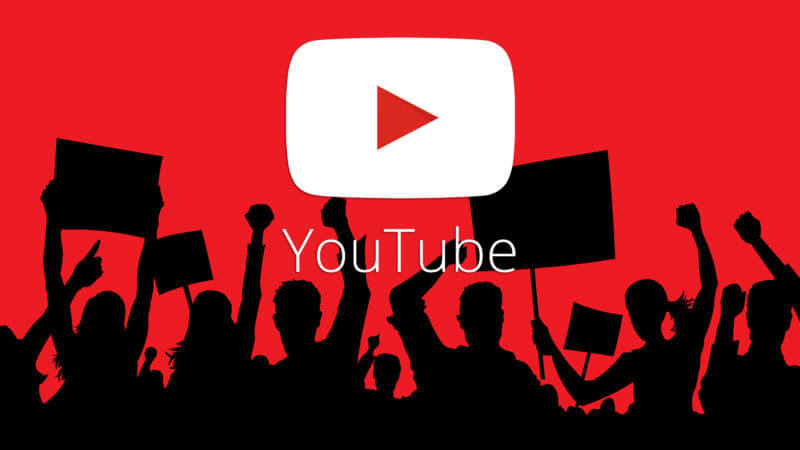Worried your company’s YouTube channel isn’t pulling its weight? Well, there’s a YouTube video for that.
Still stuck? Take a moment to familiarize yourself with YouTube’s nuts and bolts. For one of the most popular platforms on the entire Web, one that’s been going strong for more than a decade, YouTube has to contend with a lot of misconceptions.
Start by reviewing these 10 basic things to know about YouTube. Some might be self-evident; others you might be learning for the very first time. No matter what you’re trying to get out of YouTube, try to take them to heart. When it’s used properly and in conjunction with other popular social media platforms, there’s no telling where YouTube will take you.
- Embedding Gets Results
In case you haven’t noticed, YouTube isn’t the only video-friendly social platform. Even if your YouTube channel is the hub for your multimedia marketing apparatus, you can and should embed the videos you post there on other active social platforms. Embedding videos on Facebook is an absolute snap, for instance, and getting your vids out on Twitter is as simple as uploading a file (or live-recording) and hitting “send.” Unless there’s a compelling reason to silo a particular video in a single channel, make it a standing policy to duplicate video content on multiple web properties.
- YouTube Is Free Advertising
Don’t have the budget for a 30-second TV ad spot. Few do. But don’t let that stop you from posting commercial-quality video hits on your YouTube channel. Even modest corporate YouTube channels can benefit from this practice.
Remember, YouTube is among the most heavily trafficked websites in the world. Once your channel appears in search results for common terms associated with your company, any advertorial content you’ve posted becomes, well, free advertising.
- Your Audience’s Attention Span Is Probably Pretty Short
According to Buffer, the optimal YouTube video length is just shy of three minutes. That’s not to say your audience will drop off a cliff once you hit the three-minute mark, but you definitely want to be wrapping things up by then unless there’s a compelling reason to continue. For every long video mixed in to boost your watch-length metric, sprinkle four or five one- to three-minute spots to keep things lively.
- Evergreen Content Makes Life Easier for Your Audience (And Marketing Team)
There’s a reason some of the most successful YouTube videos out there are otherwise unremarkable shorts for DIY home improvement types. They’re factual, to-the-point, and — perhaps most importantly — they’re evergreen.
Come again?
Evergreen content is the yin to trending content’s yang. While it’s not totally ageless, its shelf life is far longer than newsy or of-the-moment bits that tend not to outlast the milk in your fridge. Call up a DIY home improvement how-to from 2003 and it’ll serve you just as well as a comparable vid from 2018, if you can avoid chuckling at the antiquated hair and clothing styles long enough to keep your level straight.
A YouTube channel stocked with evergreen content is easier and cheaper to maintain and curate than a channel built around timelier matters. Your marketing team, and their budget, will last a lot longer and encounter far less strain when they don’t have to update their entire libraries every quarter.
- No One Cares About the Credits
Get out of the TV mentality and skip the opening credits, even for longer videos. You need to grab your audience right out of the gate, lest you learn firsthand just how painfully short their attention spans are. The last thing they want to see when they hit “play” is a boring roll listing everyone with even a passing involvement in your video’s production.
Save the credits for the final fade, when most viewers know it’s safe to tune out. (More on what else goes after the final fade in a moment.)
- Publishing Frequency Matters
This isn’t easy for small marketing departments to hear, but that doesn’t make it any less true. Even if your business model isn’t built around video content, you’ll want to bring at least one fresh piece of multimedia marketing collateral to the table each and every week. Quick, casual hits designed for sharing count toward the total, as long as they’re interspersed with meatier content designed to advance the story about your company.
- Viewers Expect You to Plug Your Website or Other Social Handles
Back to the post-fade moment. Viewers do expect your YouTube videos to promote your website and other relevant web properties. You should definitely include a prominently displayed link to your site on the post-fade screen, making sure to freeze it for posterity. Include additional contact information there too, if warranted.
You might also consider flashing your website or primary social handle (say, Twitter or Facebook) during your opening sequence too. Again, don’t get tied up in the opening credits trap — a quick “visit us here” will do.
- People Notice Video Thumbnails
Your audience notices your YouTube channel’s video thumbnails. Do you?
Make your thumbnails as compelling as possible, even if the video itself is just you and a colleague against a monochrome background. Try a colorful corporate logo or branded banner — anything that looks good up close and from a distance.
- Live Streaming Can Be Incredibly Successful (If Done Right)
Need a few takes to get your lines right? Try simplifying the script instead.
Done properly, live streaming is an immensely powerful tool that draws audience members like moths to a flame. The trick is finding a hook for your stream — say, the industry conference or demo day where you debut a new product for the first time, a panel discussion about an issue your audience cares about, or a TEDx-style talk you’re giving about your company’s potential. Nothing says “expertise” like “this person is live on YouTube and people are clapping for them right now.”
Is Your Company’s YouTube Account Pulling Its Weight?
Back to the question at hand. After doing your darndest to turn these 10 takeaways into actionable YouTube strategies, you may well determine that your YouTube account simply isn’t pulling its weight as a branding or lead generation mechanism.
That’s okay. As social platforms go, YouTube is pretty important, but it’s not indispensable for the vast majority of its users. (Those whose business models depend heavily on monetized YouTube traffic are another story.) If you need to reassess your YouTube spend and invest your limited resources elsewhere, so be it.
Just don’t give up without giving it the old college try. Speaking of which: there’s a YouTube video for that, too, though it’s not what you might think.
Related Posts












